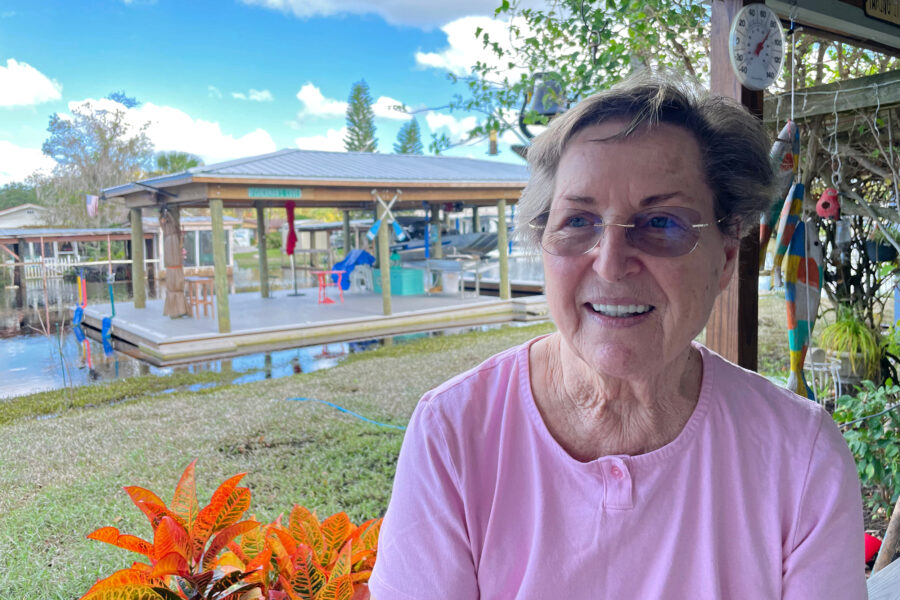As Florida Smalltooth Sawfish Spin and Whirl, a New Effort to Rescue Them Begins
An unprecedented federal effort to rescue and rehabilitate endangered smalltooth sawfish is getting underway this week in the Florida Keys, where unusual and concerning behavior has been documented including spinning and whirling, signs the fish are in distress.
Some 32 of the sawfish have been reported dead, although the number is believed to be higher, because the fish tend to sink after death. The smalltooth sawfish, in 2003, was the first marine fish to be listed as endangered under the Endangered Species Act. The range of the animal named for its distinctive rostrum, which is shaped like a saw, once spanned coastal waters from Texas to North Carolina; today, sawfish are found only in south Florida.
“From a recovery standpoint we’re alarmed that it could have long-term effects on the population’s ability to recover,” said Adam Brame, sawfish recovery coordinator for the National Marine Fisheries Service, an office of the National Oceanic and Atmospheric Administration. The service is the lead agency in the rescue and rehabilitation effort. “It’s an unprecedented event, and I would like to say it’s an unprecedented response by the agency,” Brame said.
We’re hiring!
Please take a look at the new openings in our newsroom.
See jobsThe unusual behavior and deaths began in January, affecting large juvenile and adult sawfish in the 10- to 15-foot range, although as many as 40 other fish species have exhibited similar actions since November. The fish are swimming erratically, in circles and upside down. Some are beaching themselves in shallow waters, Brame said.
“This behavior has never been seen in sawfish before,” said Brame, who has worked in sawfish recovery for nine years. “We’ve never seen mortality to this scale and to this duration in time.”
The problems were centered in the lower Florida Keys, although the affected area appears to be expanding north to include waters that are within close proximity to Everglades National Park, part of a watershed that is the focus of a multi-billion-dollar federal and state restoration effort.
“We don’t know if the animals are moving out of the area that has the affected water or if the affected water is spreading,” said Tonya Wiley, president of Havenworth Coastal Conservation, a nonprofit organization involved in the rescue and rehabilitation effort.
This portion of southern Florida also was affected last summer by a record marine heat wave that stressed sensitive coral reefs, leading to widespread bleaching.
It is not clear whether the calamities are related. Water temperature, salinity and dissolved oxygen do not appear to be factors in the sawfish event, according to the Florida Fish and Wildlife Conservation Commission, which is leading the investigation into their plight. Necropsies conducted by the agency have found no evidence of a communicable pathogen or bacterial infection. Toxins associated with red tide have not been detected in water samples.
The rescue and rehabilitation effort is the latest in Florida. Last summer’s bleaching event sparked a rush to rescue the ailing corals from dangerously hot waters and relocate them to on-land tanks. Thousands of corals were removed from the Florida Keys National Marine Sanctuary, which includes the only barrier reef in the continental United States.
Nearly 2,000 manatees died in the state in 2021 and 2022, a two-year record. The die-off prompted the U.S. Fish and Wildlife Service and Florida Fish and Wildlife Conservation Commission to go so far as to provide supplemental lettuce for starving manatees in the Indian River Lagoon, a crucial manatee habitat on the state’s east coast, where ongoing water quality problems have led to a widespread loss of seagrass, the sea cows’ primary food. Aquariums, zoos and other rehabilitation facilities scrambled to take in the emaciated manatees.
The sawfish effort is unusual because, unlike manatees, which can be transported in vans and trucks, the massive fish must remain submerged to breathe, a fact posing big challenges for the collaborators involved in their rescues. The effort also includes the Florida Fish and Wildlife Conservation Commission and Mote Marine Laboratory and Aquarium, among other partners.
The puzzle of how to relocate the sawfish remains under discussion; possibilities include in-water towing vessels, Brame said. NOAA Fisheries said never has there been such an attempt to rescue and rehabilitate smalltooth sawfish from the wild.
The cost of these efforts hasn’t been calculated, and Wiley said most of the partners already have spent through their reserves and now are scrambling to raise money for their emergency work.
The plan is to move the animals to quarantined tanks where they can receive around-the-clock care. After that, it is uncertain whether the sawfish will be returned to where they were collected from, if the problem affecting them proves to be environmental, Brame said.
“It’s really hard because it’s a species that I’ve been working on for over two decades, and this is the singular most devastating event that we’ve had for sawfish,” Wiley said. “To not know what is causing it yet, it’s really hard. We’ve lost a lot of sleep. We’re all very taxed, and that’s why we launched this effort to rescue and rehab them. We couldn’t just sit by and watch them die.”
The public is asked to report sightings of healthy, sick, injured or dead sawfish to the Florida Fish and Wildlife Conservation Commission’s hotline, at 1-844-4SAWFISH. Sightings also can be reported by emailing [email protected]. Reports should include the date, time and location of the encounter, along with estimated length, water depth and other relevant details.
Share this article
Disclaimer: The copyright of this article belongs to the original author. Reposting this article is solely for the purpose of information dissemination and does not constitute any investment advice. If there is any infringement, please contact us immediately. We will make corrections or deletions as necessary. Thank you.







